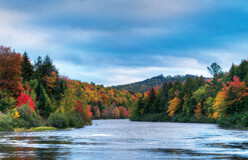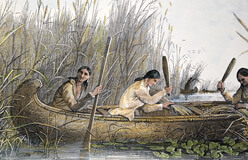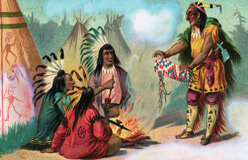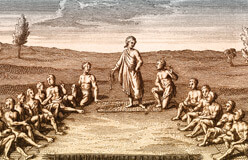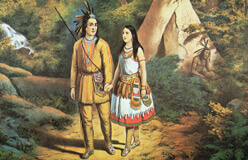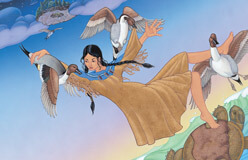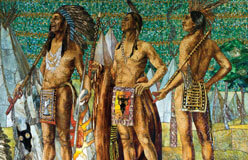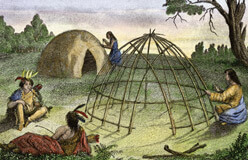Some eastern woodlands nations formed confederacies, or alliances. The members worked to help each other. They also fought together against enemies.
Five of the Iroquois nations got along very well. They were the Mohawk, the Oneida, the Onondaga, the Cayuga, and the Seneca. They lived near each other in what is now New York State. Before Europeans came to North America, they had formed the Iroquois League. They did it to have more peace among themselves. Their system was so good, it inspired the framers of the U.S. Constitution. Benjamin Franklin wrote that the new country could learn a lot from the Iroquois League.
